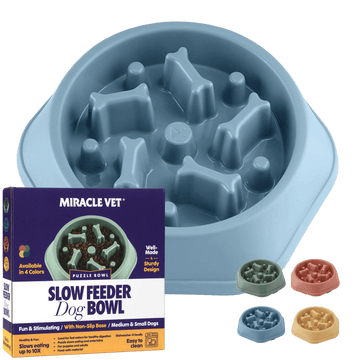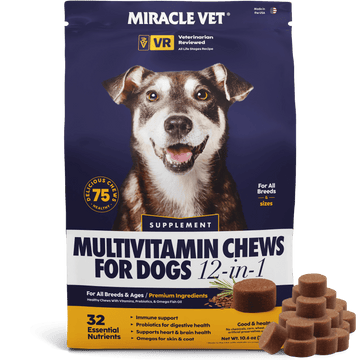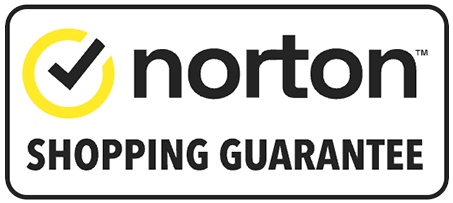
How To Tell If You Are Really Buying a Healthy, Natural Dog Food
These days, it can be hard to tell what you’re buying at the pet food store.
Every single bag on the shelf promises to be good for your dog. They all have pictures of cute-looking puppies and promise to deliver complete & balanced nutrition for dogs.
But in your heart, you know that’s not true.
Of course there are definitely healthy dog foods out there. But many of them—especially the most heavily marketed, mass-produced varieties—use big marketing budgets and emotional packaging to make their products appear much more nutritious than they really are.
So what’s a caring dog owner to do?
Don’t worry, we’ve got your back.
In this article we’ll walk you through some of the most important ingredients to look out for in a dog food.
Ingredients List Basics
The first thing to realize about any packaged food is that the ingredients are listed by weight. Meaning that the ingredient making up the largest percentage of the food’s weight is the first item in the ingredients list.
Generally speaking you’ll want to pay the most attention to the first 3-5 ingredients, since they make up the bulk of the food. The only exception would be ingredients that are supposed to be present in very small quantities, like added vitamins & minerals.
Here’s a quick tip: scan the ingredients list for “salt” or “potassium chloride.” These ingredients will typically make up about 1% (or less) of most dog foods. So if you find that ingredient, you’ll know that everything after it on the label is present at less than 1%.
The Best Meat for Dog Food
Dogs thrive on a meat-based diet, so this is an important ingredient to get right.
Here are a few pointers on choosing the a dog food with a healthy meat source:
- the #1 ingredient on the label should be some form of meat, and that’s non-negotiable. If it isn’t, then it’s not a good choice for your dog.
- The meat should be named. “Meat meal” won’t cut it—that could include ground-up chicken feet for all you know. It should say something like “chicken meal.”
- Speaking of “meal”: it’s a good thing. Especially for dry foods. Meat meal just means that the meat is dehydrated, making the meat more concentrated—and increasing the protein content by 300%.
Good meat choices include duck, chicken, beef, turkey, salmon, and whitefish.
(Bonus points if the #1 and the #2 ingredients are some form of named meat meal.)
Vegetables in Dog Food
After meat, the next important thing to look for is fruits and vegetables. Have these been included in the formula? Generally speaking, healthy dog food tend to have several different types of vegetables added for maximum nutrition.
Cheaper dog foods will include some artificial vitamins & minerals, but will not take the time (or the expense) to include real, healthy vegetables.
Vitamins, Minerals, & Other Supplements in Dog Food
Healthy meats and vegetables are REALLY important in a dog food. But even with plenty of meats & veggies, there will still be some nutrients that are simply hard to find in foods.
That’s why a healthy, natural dog food will supplement with some or all of these important vitamins & minerals:
- Ascorbic acid (vitamin C)
- Biotin
- Calcium
- Copper
- Folic Acid
- Iron
- Manganese
- Niacin
- Riboflavin
- Vitamin A,
- Vitamin B12
- Vitamin D
- Vitamin E
- Zinc
(Bonus points if the vitamins are proteinated-chelated, which means they are easier to digest & absorb.)
Some of the really best dog foods will also supplement other ingredients that are good for your dog. For example, glucosamine/chondroitin provides joint support by preventing stiff, painful joints and relieving arthritis. And prebiotics/probiotics help improve your dog’s intestinal health by encouraging healthy bacteria throughout the digestive system.
Other Things to Look For in Dog Food
We’ve hit on the big things, but here are a few other tips to keep in mind when evaluating dog food:
- Is it made in the USA? Manufacturing standards vary by country, so for the best of the best, trust the good old USA.
- Does it include healthy fats? Good choices would include fish oil or flax seed.
- Does it use a natural preservative like vitamin C, vitamin E, or ascorbic acid? This is better than that unhealthy synthetic stuff.
- Is it vet-approved? It’s not a guarantee of a great food, but it helps if a veterinarian has reviewed and approved the formula.
- Does it follow manufacturing best practices (GMP)? Is it made in an FDA-registered facility? These are important
Cheap Ingredients to Avoid in Dog Food
Finally, here are a few things that are most definitely BAD for dogs…keep an eye out for this, and say “no thanks” to any dog food that contains them:
- Antibiotics
- Gluten
- Hormones
- Grains
- Corn
- Soy
- Wheat
- Artificial ingredients
And now that we’ve covered all the main parts of a healthy, natural dog food, it’s time for…
The #1 Dog Food We Recommend…
Was there any doubt that we would recommend our own Miracle Vet Super Premium Dog Food?
(Hey, it’s our blog. We’re allowed. :)
But seriously, guys, we put a huge amount of time and effort into making sure this is the absolute healthiest dog food on the market. Bar none.
And in case you’re wondering, it ticks every single box from this post…and then some.
✓ The top 2 ingredients are whitefish meal and duck meal.
✓ It’s packed with 12 nutritious organic vegetables chosen specifically for high nutrient content (lentils, spinach, beets, kelp…).
✓ All the added vitamins & minerals are proteinated-chelated to maximize absorption.
✓ We’ve added glucosamine & chondroitin for joint support and probiotics for digestive support and coat health.
✓ Flax seeds contribute omega 3 fatty acids, which do wonders for your dog’s skin & coat and general health.
✓ And of course, we don’t use ANY of that bad stuff, EVER. No antibiotics, gluten, hormones, grain, corn, soy, wheat, or artificial ingredients.
So give it a try. If your dog doesn’t absolutely LOVE it after 30 days, you can return it on us.
(But we’re pretty sure they are.)
Here’s that link again:









